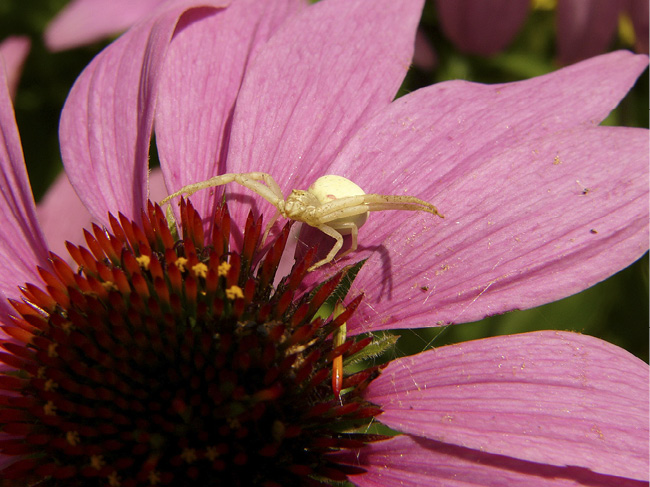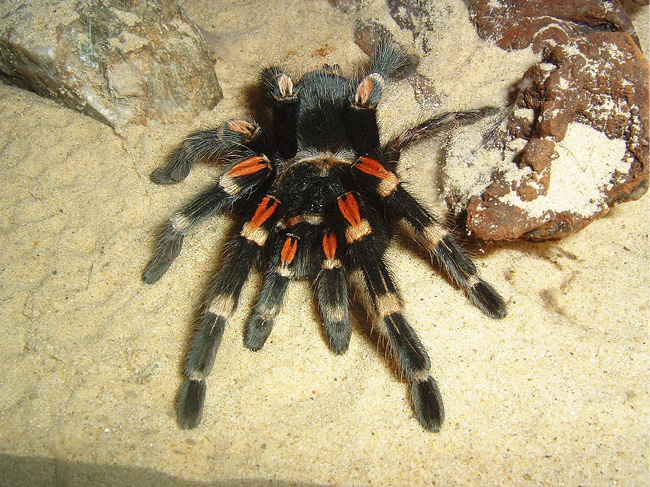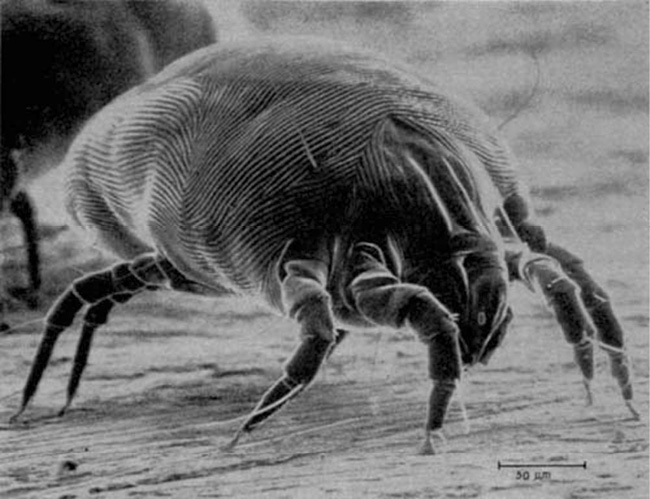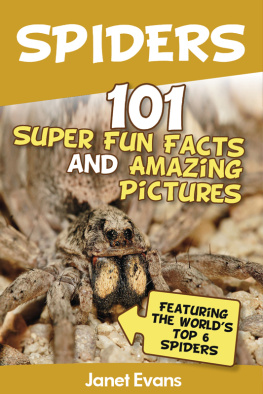Title Page
101 AMAZING FACTS ABOUT SPIDERS
...and other arachnids
Jack Goldstein
Publisher Information
Published in 2014 by
Andrews UK Limited
www.andrewsuk.com
The right of Jack Goldstein to be identified as the author of this work has been asserted by him in accordance with the Copyright, Designs and Patents Act 1998
Copyright 2014 Jack Goldstein
All rights reserved. No part of this publication may be reproduced, stored in a retrieval system, or transmitted, in any form or by any means without the prior written permission of the publisher, nor be otherwise circulated in any form of binding or cover other than that in which it is published and without a similar condition being imposed on the subsequent purchaser. Any person who does so may be liable to criminal prosecution and civil claims for damages.
All facts contained within this book have been researched from reputable sources. If any information is found to be false, please contact the publishers, who will be happy to make corrections for future editions.
Introduction
Do you know the difference between a spider-web and a cobweb? What are the two sections of a spiders body called? Which spider holds the record for the largest legspan? And which species wears the drained corpses of its victims on its back? All of these questions and more are answered in this fascinating eBook containing over one hundred facts, separated into sections for easy reference. So if you want to know the various uses to which spiders put their silk, or the origin of the tarantella dance, then this is the book for you!
Follow Jack Goldstein on Twitter @GoldsteinBooks
Visit Goldstein Books at www.jackgoldsteinbooks.com
The Basics
- Spiders belong to a group of animals that are called arachnids . One defining characteristic of the class is that all arachnids have eight legs.
- Other features of the arachnids include having two distinct body segments, no wings or antennae and an inability to chew.
- As well as spiders, other animals in the arachnid class include scorpions, mites and ticks.
- Spiders are thought to be the most diverse within the arachnid class; it is estimated that there are more than fifty thousand species of them!
- The second most diverse are the mites, with an estimated forty-eight thousand species on the planet.
- Arachnids are part of a group or phylum known as the arthropods. Every arthropod has jointed limbs; aside from arachnids, the phylum also includes insects and crustaceans.
- Almost all spiders display predatory activity, and some even eat other spiders! The only exception that we know of is one single herbivorous species discovered in 2008 that is named Bagheera kiplingi.
- The first true spiders lived around three hundred million years ago, although some spider-like arachnids appeared seventy million years before that.
- Most Spiders have appendages called spinnerets . These are organs that produce silk with which the spiders spin webs (although some use the silk to catch their prey in other ways).
- The vast majority of spiders use venom to subdue their prey, injected into a victim through fangs. The only exception we are aware of is the family of spiders called Uloboridae which do not have venom glands.

A Crab Spider
General Facts
- Most spiders have eight eyes, however the number does vary between species. Despite this, a spiders vision is usually nowhere near as strong as its sense of smell.
- Due to the incredible strength of spider silk, scientists are currently studying it in the hope of creating a super-tough material with the same abilities.
- Although it is very rare, there have been instances where clothes have been made out of spider silk. Unlike silk-moths however, farming spiders for their silk is extremely difficult and as yet there have not been any economically viable methods found to do this - despite many attempts, including a number that have been patented over the last few hundred years!
- Spiders have short hook-like hairs on their feet which is what allows them to walk on walls and the ceiling.
- Even venomous spiders rarely bite people, and only do so in defence - they have no reason to attack humans!
- You could think of the hairs on a spiders front most pair of legs as taste organs - spiders often use these to touch their prey and taste it to ensure it is a suitable meal.
- You should consider spiders as welcome guests - they help keep the population of pests such as flies and aphids down.
- On average most spiders live for one or two years, however some tarantulas live for more than twenty!
- Whereas your skeleton is inside your body, a spiders skeleton surrounds it - this is known as an exoskeleton .
- Some spiders spin a new web every single day; so as not to waste valuable nutrition it is not unusual for a spider to eat its own web before starting afresh!

A Tarantula
Other Arachnids
- Mites are amongst the most diverse of all invertebrates, although they generally go unnoticed as they are microscopic in size.
- Despite this, mites are an extremely important part of our ecosystem. Many species are responsible for carrying out decomposition and are found in a range of habitats across the world.
- Some mites on the other hand are problematic to humans; those that colonize human skin can lead to itchy rashes, and many people with hay fever, asthma and eczema find their conditions aggravated by dust mites.
- Ticks are external parasites which usually live on the blood of mammals and birds, but sometimes even on reptiles and amphibians.
- The ticks that live off domestic animals can be particularly problematic, and can devastate herds of livestock in some circumstances.
- There are three families of ticks, although one - the Nuttalliellidae - is comprised of a single species, Nuttalliella namaqua . The other two families are hard ticks ( Ixodidae ) and soft ticks ( Argasidae ).
- Some arachnids have evolved so that their front two legs have more of a sensory purpose than for walking. In some cases this may even make it difficult to determine that the creature you are looking at has eight legs (as all arachnids do).
- Others have evolved so that extra appendages have grown to the extent that they may look like additional legs, giving the appearance that there are more than the normal four pairs!
- Another type of arachnid is the order called Thelyphonida , also known as whip scorpions (due to their similarity to true scorpions because of their long tails). The largest of these belong to the genus Mastigoproctus , whose bodies can reach 8.5cm in length.
- There are further families within the arachnid order, such as tailless whip scorpions ( Amblypygi ), Opiliones (which includes harvestmen), Palpigradi (very small cousins of whip scorpions) and others.

A Dust Mite
Record Breakers
- The heaviest spider that we know of is the goliath bird-eating spider. A captive specimen by the name of Rosi weighed in at 175 grams and had a body length of 119.4mm.
- However, some scientists have challenged this assertion, believing that the Hercules baboon spider is in fact heavier. In a recent weigh-off between specimens from the two species at the Natural History Museum, the goliath still came out on top - although as only one example of the Hercules baboon has ever been found (and that was collected from Nigeria over 100 years ago) it may not have been a particularly large one!
Next page













